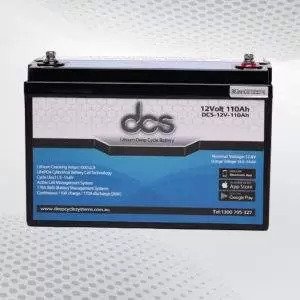Going the Distance: How Lithium Ion Battery Packs Revolutionized Mobility

The advancement of technology has greatly impacted our daily lives, from how we communicate to how we travel. One of the most significant developments in mobility has been the introduction of lithium-ion battery packs. These powerful and compact energy storage units have revolutionized how we power our devices and vehicles, providing longer-lasting and more efficient performance. This blog post will explore the history, benefits, and future of lithium ion battery packs and how they have transformed how we go the distance.
The Genesis of Lithium-Ion Battery Packs
The journey of lithium-ion battery packs began in the 1970s with early research into lithium as an energy source. By the 1990s, they became commercially viable, revolutionizing portable electronics with higher energy densities and extended life cycles. Variations in cathode materials like lithium cobalt oxide led to significant advancements, enabling the widespread use of lithium-ion batteries in various applications, from smartphones to electric vehicles.
Their evolution continues, exploring safer and more efficient chemistries like lithium iron phosphate and polymer. Ongoing research aims to enhance capacity, safety, and recyclability, shaping a future where lithium-ion battery packs play a pivotal role in sustainable energy storage solutions across industries.
Breaking Down The Functionality: How Does A Lithium-Ion Battery Work?
Lithium-ion batteries are like the powerhouses behind our devices, but have you ever wondered how they work? Let’s break down the functionality of these incredible energy storage units. At the core of a lithium-ion battery are two electrodes: an anode and a cathode. These electrodes are separated by an electrolyte, allowing lithium ions to move between them. Lithium ions flow from the cathode to the anode when the battery is charged, creating an electric current.
The opposite happens when the battery is discharged, and the lithium ions flow back to the cathode. The key to the efficiency and longevity of lithium-ion batteries lies in their electrode materials. The anode is typically made of graphite, which can store lithium ions. On the other hand, the cathode can be made of different materials depending on the application, such as lithium cobalt oxide for smartphones or lithium iron phosphate for electric vehicles.
Exploring the Major Advantages of Lithium-Ion Battery Packs
Lithium-ion battery packs have become the backbone of modern technology, and their advantages are undeniable. These batteries offer a higher energy density compared to traditional battery technologies. This means they can store more energy in a smaller, lighter package, making them perfect for portable devices like smartphones and laptops.
Lithium-ion battery packs have a longer lifespan and higher cycle life, meaning they can be charged and discharged more times without losing capacity. This makes them more durable and cost-effective in the long run. Lithium-ion batteries have a low self-discharge rate, which means they can hold their charge for longer periods when not in use. This is crucial for devices that may sit idle for extended periods, such as emergency backup systems.
Furthermore, these batteries have a high discharge rate, allowing for quick and efficient power delivery when needed. This is especially beneficial for electric vehicles, where fast acceleration and regenerative braking are crucial. Lithium-ion batteries are environmentally friendly, containing no toxic materials like lead or mercury. They also have a higher energy efficiency, which means less wasted energy and reduced carbon footprint.
Lithium-Ion Batteries and Their Role in Revolutionizing Mobility
Lithium-ion batteries have played a crucial role in revolutionizing the way we move. These powerful energy storage units have transformed our mobility options from smartphones to electric vehicles. One of the key advantages of lithium-ion batteries is their high energy density, which allows for longer-lasting power in a smaller and lighter package. This has enabled the development of portable devices that can be carried and used anywhere.
Furthermore, lithium-ion batteries’ longer lifespan and higher cycle life have made them ideal for electric vehicles. They can be charged and discharged more times without losing capacity, providing a reliable and durable power source for transportation. Not only are lithium-ion batteries efficient and reliable, but they are also environmentally friendly. They contain no toxic materials and have a higher energy efficiency, reducing our carbon footprint and contributing to a more sustainable future.
The Future Perspective: Sustainability and Innovation in a Lithium Ion Battery
As we look towards the future, sustainability and innovation are key factors in the continued development of lithium-ion battery technology. The demand for more environmentally friendly energy solutions has led to research and development efforts focused on improving the sustainability of lithium-ion batteries.
One of the major areas of innovation is in the materials used to create the battery. Researchers are exploring alternatives to the commonly used cobalt and nickel, which have social and environmental concerns associated with their extraction and processing.
New materials such as lithium iron phosphate (LFP) and lithium manganese oxide (LMO) are being investigated for their potential to offer improved performance while being more sustainable. Additionally, efforts are being made to enhance the recyclability of a lithium ion battery. The environmental impact of battery production and disposal can be minimized by improving the processes for recovering and reusing valuable materials, such as lithium and cobalt.
Optimizing Lithium-Ion Battery Performance
There are a few key tips to keep in mind to ensure optimal performance and longevity of your lithium-ion battery pack. It’s crucial to avoid extreme temperatures. High temperatures can accelerate the degradation of the battery, while extremely low temperatures can decrease its efficiency. Therefore, storing and using your device in a temperature-controlled environment is best whenever possible.
Additionally, it’s important to avoid fully discharging your battery regularly. Lithium-ion batteries prefer to be charged and discharged partially rather than fully. A good rule of thumb is to keep the battery level between 20% and 80% most of the time. Regularly updating your device’s software can also help optimize battery performance. Software updates often include improvements and bug fixes that can help reduce the battery drain.
Maximizing Efficiency: Tips for Maintaining Your Lithium-Ion Battery Pack
When it comes to maximizing the efficiency of your lithium-ion battery pack, a few simple tips can help you get the most out of your device. It’s important to avoid overcharging your battery. Once your device reaches a full charge, unplug it to prevent unnecessary strain on the battery. Similarly, avoid letting your battery completely drain before recharging it.
It’s best to keep your battery level between 20% and 80% for optimal performance. Another tip is to keep your device in a cool, temperature-controlled environment. High temperatures can decrease the efficiency of your battery and even cause permanent damage. Regularly updating your device’s software can also help optimize battery performance.
Software updates often include bug fixes and improvements that can reduce battery drain. Avoid using battery-intensive features, such as high brightness levels or multiple background apps, when you’re not using them. These features can drain your battery quickly and decrease its overall lifespan.
Charging Up: Tips For Maintaining Lithium-Ion Batteries
When it comes to maintaining the performance and lifespan of your lithium-ion battery, there are a few key tips to keep in mind. It’s essential to use the appropriate charger for your device. Using a charger not designed for your battery can lead to overcharging or undercharging, shortening its lifespan. It’s important to avoid extreme temperatures when charging your battery. High temperatures can degrade the battery faster, while extremely low temperatures can affect its efficiency.
Another tip is to avoid leaving your device plugged in and fully charged for long periods. Overcharging can put unnecessary strain on the battery and reduce its overall capacity. Similarly, avoid letting your battery completely drain before recharging it. Lithium-ion batteries prefer to be charged and discharged partially rather than fully. Aim to keep your battery level between 20% and 80% most of the time for optimal performance.
FAQ’s
Q: Can lithium-ion batteries be recycled?
A: Yes, lithium-ion batteries can and should be recycled. They contain valuable materials that can be recovered and reused, reducing the environmental impact of battery production and disposal.
Q: Can I use any charger with a lithium-ion battery?
A: Using the charger provided by the device manufacturer or a reputable third-party charger compatible with your specific battery is recommended. Using the wrong charger can lead to damage or reduced battery performance.
Q: Can I overcharge a lithium-ion battery?
A: Overcharging a lithium-ion battery can shorten its lifespan and pose safety risks. It’s best to unplug the battery once it reaches a full charge to avoid any potential damage.
Q: Can I travel with lithium ion battery packs?
A: Yes, you can travel with lithium ion battery packs, but specific regulations and restrictions depend on the battery’s capacity and the mode of transportation. It’s important to check with the airline or relevant authorities before traveling.
Q: Can I replace the lithium-ion battery in my device?
A: Lithium-ion batteries can be replaced in many cases, especially in devices like smartphones and laptops. However, it’s recommended to have the battery replaced by a professional or authorized service center to ensure proper installation and safety.
Conclusion
This blog post has explored the history, benefits, and future of lithium-ion battery packs. These compact and powerful energy storage units have revolutionized how we power our devices and vehicles. Lithium-ion batteries have proven to be a game-changer from their genesis in the 1970s to their role in revolutionizing mobility. They offer a sustainable and efficient power solution with their high energy density, longer lifespan, and environmental friendliness. As we look towards the future, sustainability and innovation will continue to drive advancements in lithium-ion battery technology, ensuring a more sustainable and energy-efficient world.



